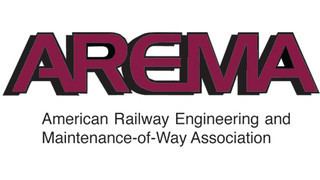Founded 1997 | ||
 | ||
Similar National Railroad Construct, Association of American, American Public Transport, American Society of Civil Engi, American Welding Society | ||
The American Railway Engineering and Maintenance-of-Way Association (AREMA) is a North American railway industry group. It publishes recommended practices for the design, construction and maintenance of railway infrastructure, which are requirements in the United States and Canada.
Contents
- Overview
- History
- American Railway Bridge and Building Association
- Roadmasters and Maintenance of Way Association
- Communications and Signal Division of the Association of American Railroads
- Technical committees
- Recommended practices
- Manual of Railway Engineering
- Communications Signals Manual of Recommended Practices
- Proceedings On Line
- References
Overview
AREMA is headquartered in Lanham, Maryland, a suburb of Washington, DC. As stated in their mission statement, AREMA promotes, "The development and advancement of both technical and practical knowledge and recommended practices pertaining to the design, construction and maintenance of railway infrastructure." Beth was appointed as AREMA's Executive Director/CEO in September 2015. Prior to this appointment, she served as AREMA's Director of Administration. Brian A. Lindamood is the AREMA President and Chairman of the Board of Governors for 2015-2016.
History
AREMA was established on October 1, 1997 by the merger of three engineering support associations:
Each of these organizations have devoted over 100 years of service to the rail industry to AREMA.
American Railway Bridge and Building Association
Formed in 1891 in St. Louis, Missouri as the American International Association of Railway Superintendents of Bridges and Buildings, the Association initially represented 40 railroads. The name was changed in 1907 to the American Railway Bridge and Building Association. The group provided a forum to exchange information and to mind solutions to problems that confront the railway industry.
Roadmasters and Maintenance of Way Association
The oldest of the groups was organized in 1883 by 61 roadmasters representing 24 railways. The Association provided a means through which maintenance officers would have an opportunity to meet and discuss their mutual problems. Rail joints, switches, frogs and ties were among the subjects studied, leading to the standardization of maintenance practices.
Communications and Signal Division of the Association of American Railroads
In 1885, the Association of Telegraph and Telephone Superintendents was formed by the telegraph superintendents of the major railroads. In 1895, the Railway Signaling Club was organized at a meeting in Chicago, Illinois and created a code of rules governing the operation of interlockings. In 1919, the Signaling Club became the Signal Division of the newly created American Railway Association (ARA) and the Telegraph Superintendents became its Telegraph and Telephone Section. The ARA became the Association of American Railroads (AAR) in 1934; the Signal Division was renamed the Signal Section and the Telegraph and Telephone was renamed the Communications Section. The two sections merged in 1961 to become the Communications and Signal Division of the AAR, which has now been merged into AREMA.
Technical committees
AREMA has 29 technical committees, organized in six functional groups. The committees, whose volunteer members come from the railroad industry, meet on a regular basis and use their expertise to come up with the best methods to maintain a railroad.
Recommended practices
AREMA publishes recommended practices in nine separate documents. Manual for Railway Engineering, Communications and Signals Manual, Practical Guide to Railway Engineering, and the Bridge inspection Handbook are four of AREMA's prime publications.
Manual of Railway Engineering
The AREMA Manual for Railway Engineering contains principles, data, specifications, plans and economics pertaining to the engineering, design and construction of the fixed plant of railways (except signals and communications), and allied services and facilities.
21 chapters are contained in four volumes, updated annually by the technical committees.
Consultants use the Manual's recommendations as a basis for design. Many railroads use the Manual as a basis for their track standards and may add to it to describe their specific needs.
Communications & Signals Manual of Recommended Practices
The AREMA Communications & Signals Manual of Recommended Practices contains recommended practices for railway communications and signaling.
24 sections are contained in five volumes, written and updated by the AREMA committees.
These practices are required for railroads in the United States by the Federal Railroad Administration and in Canada by Transport Canada.
Proceedings On-Line
An electronic version of AREMA's Procedures and Proceedings is available to members. The extensive library includes over 65 years of technical proceedings taken from the Roadmasters & Maintenance of Way Association Proceedings and the American Railway Bridge and Building Association proceedings. Earlier Proceedings of the Annual Convention are available as digitized books.
